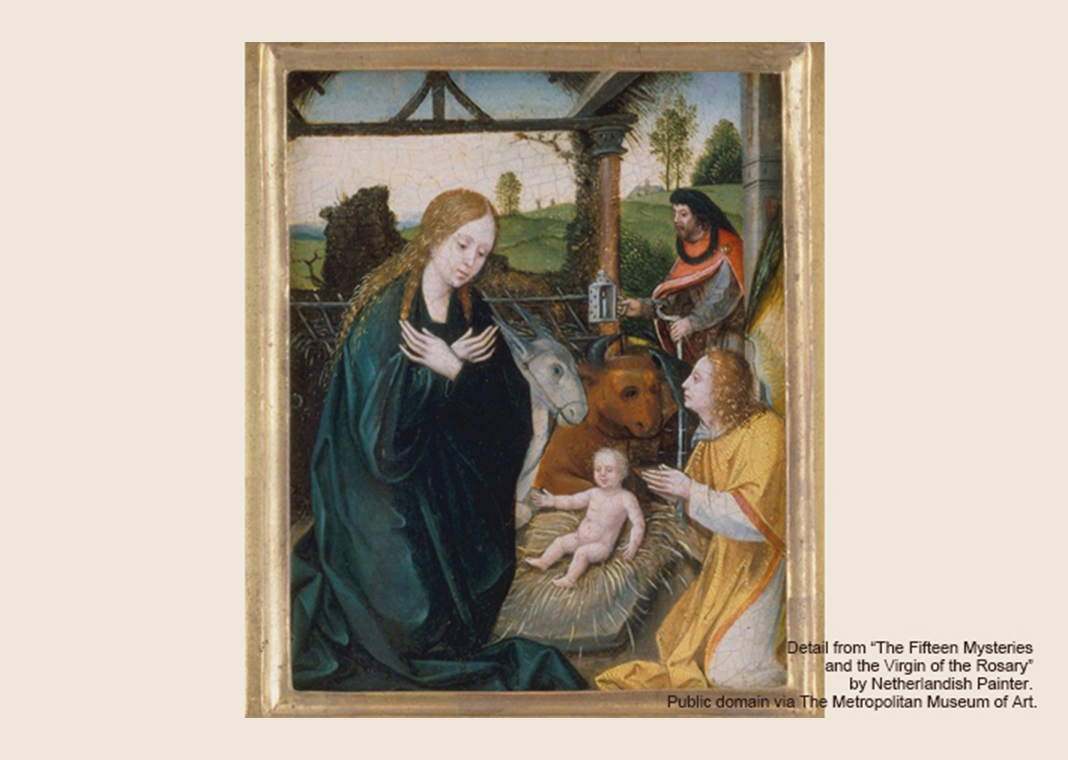
Today, we look at the Third Joyful Mystery: the Nativity.
For my 50th birthday, my wife told me to splurge and buy a ticket to see Sir Paul McCartney live at Wrigley Field in Chicago. Even after John Lennon’s tragic death in 1980, I still held out hope that I might one day see one of the remaining Beatles perform in the flesh. My wish came true, and it was one of the most exciting experiences of my life—something to cross off the bucket list.
We all long to see certain people in the flesh. This desire is never more poignant than when children long to see one of their parents return from military service. Writing letters, texting, e-mailing, and video chats are all nice, but to see a loved one in the flesh and to hold that person once again is divine. Videos of many such reunions can be found online, and many are assured to bring a tear to the eye.
Throughout history, humankind has deeply desired to see God’s face. God knew the best way for such an encounter to happen was in the flesh. Jesus Christ is God, in the flesh. He is the face of God. In the Third Joyful Mystery, we reflect on the Nativity, the moment that heaven and earth became intimate through the Incarnation of Jesus, the Word made flesh.
For some religions, the notion of the Nativity is scandalous; how can the Divine, who is transcendent, become immanent without losing divinity? Our God says, “Just watch me!”
Because of the Nativity—the birth of Jesus Christ, the Son of God—Christians rejoice in the nearness of God. And this intimacy did not end after Jesus’ 33 years on earth. For Catholics, this intimacy continues not only through the presence of the Holy Spirit, but also and especially through the Eucharist, when we encounter and receive the Body and Blood of Jesus Christ—God in the flesh.
May we rejoice in the Nativity and recommit ourselves to bringing the nearness of God to all those we encounter!
Image: Detail from “The Fifteen Mysteries and the Virgin of the Rosary” by Netherlandish Painter (possibly Goswijn van der Weyden, active by 1491, died after 1538), ca. 1515–20, public domain via The Metropolitan Museum of Art.




Be the first to comment